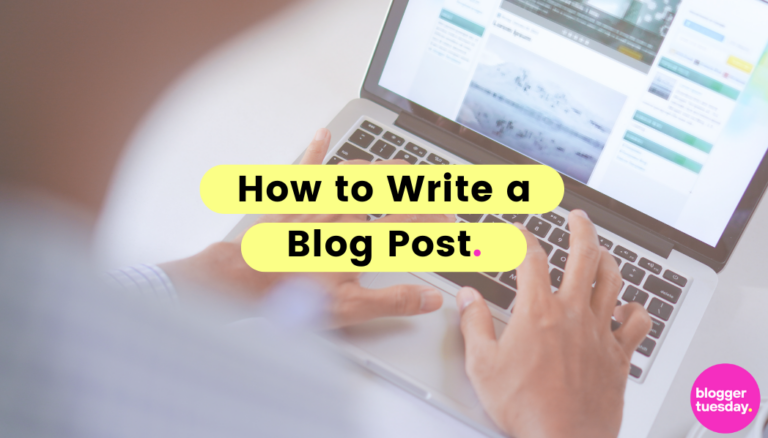From helping to boost your website’s search engine ranking to establishing yourself as an authoritative voice in your field, there’s no shortage of advantages to hosting a blog on your website.
The only downside?
You have to write them.
Knowing how to write a blog post isn’t enough—you need to know how to write a good blog post. After all, a poorly written, low-quality blog will do much more harm than good.
Happily, putting together an engaging blog post that benefits your brand is more straightforward than you might think. We’ve put together a bunch of tips to help you get started.
Essential Steps to Start a Blog Post
To get started, you’ll need two things:
- A topic
- A target audience.
The topic should be something related to your website’s overall purpose. For example, a website that sells home workout equipment might have a blog that discusses the five most effective strength-building exercises. If you need some help figuring out what to write, you can use an AI blog idea generator tool. Looking at the types of blogs your competitors have written is also recommended for idea generation.
Understanding your target audience can help shape the tone and structure of the blog, allowing you to deliver your content in a way that resonates with the audience.
Crafting Engaging Titles and Intros
The bulk of your blog’s content is what matters most — but unless you have an attention-grabbing title and engaging blog introduction, then it’s unlikely that anyone will click and read the piece.
There are plenty of blog title generator websites you can use to come up with an engaging title, though when in doubt, stick to the tried-and-tested classic openings:
- How To
- X Number of Ways To
A strong introduction should be short, sweet, and get to the point of the blog as quickly as possible. It should give the reader a clear understanding of what they’ll learn/achieve by the end of the blog.
Structuring Content for Maximum Impact
It’s not just what you say, but how you say it. Or should we say, how you present it.
You might have the most brilliantly informative piece of text in the universe, but if it’s not structured correctly, then it’s unlikely that anyone will read it.
‘Wall of text’ blog posts create work for the user — and that’s work that they’re unlikely to do.
Structuring your content correctly makes reading the blog more enjoyable for the user. Your post should be broken up into manageable chunks, use relevant headings, and be scannable; remember, people don’t read website text in detail, but rather scan it to get the information they’re looking for.
Writing with SEO in Mind for Higher Reach
Blog posts can be used to educate your visitors and establish your trustworthiness.
But they can also be used to attract visitors to your website, too. Writing your blog post with SEO (Search Engine Optimisation) is a terrific way to grab the attention of Google users who are making searches related to your blog topic.
While you should write the blog post with human readers in mind, you can also add some Google-friendly touches that ensure the search engine’s bots can index and rank the page.
Looking to get as much SEO bang for your buck as possible from your blog post? Make sure you include the following.
- Keyword-optimised title
- Focus keywords and relevant keywords
- Meta descriptions
- Including images/videos
- 500+ words
- Internal, external linking.
Creating Compelling Visual Content
Remember above, when we mentioned that using headings and breaking up your text into manageable chunks will help to make reading your blog more enjoyable?
Including images, videos, and other visual content will, too.
It’s the text of the blog post that’ll do most of the talking — but your visual content will play an important supporting role in enhancing the reader’s experience. You can include imagery throughout your blog if appropriate, but at the very least, look at including a main image that’s relevant to the blog topic.
You can get royalty-free, high-quality images for free from the following websites:
Don’t forget to add alt-text to any images that you include. They’re an easy way to give your website a few extra SEO points.
Developing a Consistent Writing Style
You can choose any type of writing style for your blog. So long as it’s relevant to your branding, it can be humorous and lighthearted, formal and informative, conversational, or, well, anything!
Once you’ve settled on a ‘voice’ for your blog, it really should be settled. Your readers will come to expect a certain style, helping to boost engagement and increasing the chances that they come back for more. Plus, having a consistent writing voice just looks more professional.
Note: if there are multiple writers for your blog, putting together a content style guide for your brand can help maintain consistent voice.
Editing and Proofreading for Quality
Want an easy way to undo all the good work of your blog post?
Include a bunch of grammar and spelling errors.
Errors disrupt the reading experience, and also reflect poorly on your brand. People might forgive the odd missed word, but a blog that is poorly written throughout will leave a lasting impression (and not a good one!).
You can use a website like Grammarly.com or Prowritingaid.com to check for any errors that Google Docs or Word may have missed. It’s also a good idea to have someone you trust read over the blog before publishing, just to make sure that the message you’re looking to send is conveyed correctly.
Elevate Your Blog Game Today
Blogs are a tried-and-tested way to attract and engage website visitors. They’re also one of the most cost-effective marketing strategies that we can think of. Done correctly, your blog posts will help increase website traffic, build your authority, and drive conversions. That’s a lot of benefit from something that requires virtually no money at all.
Keep the tips we’ve outlined above in mind, and you’ll not only know how to write a blog post—you’ll know how to write one that truly boosts your brand.


